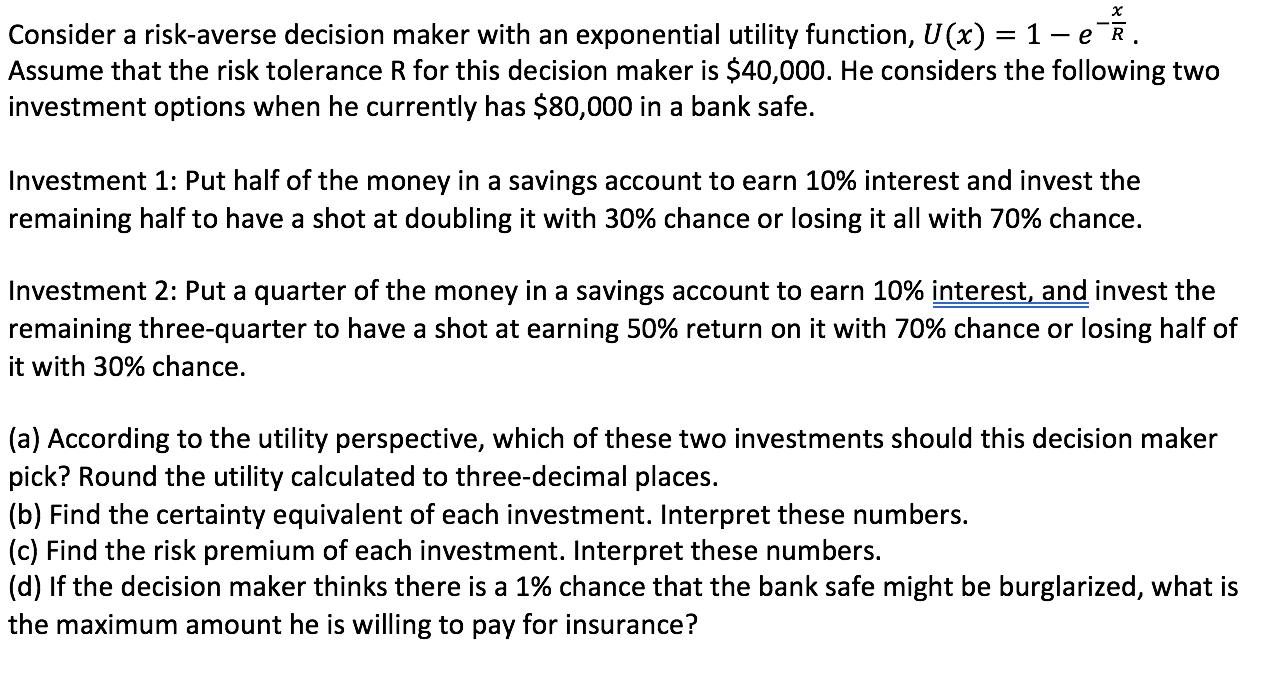Answered step by step
Verified Expert Solution
Question
1 Approved Answer
Consider a risk-averse decision maker with an exponential utility function, U(x) = 1 -e -e-R. Assume that the risk tolerance R for this decision

Consider a risk-averse decision maker with an exponential utility function, U(x) = 1 -e -e-R. Assume that the risk tolerance R for this decision maker is $40,000. He considers the following two investment options when he currently has $80,000 in a bank safe. Investment 1: Put half of the money in a savings account to earn 10% interest and invest the remaining half to have a shot at doubling it with 30% chance or losing it all with 70% chance. Investment 2: Put a quarter of the money in a savings account to earn 10% interest, and invest the remaining three-quarter to have a shot at earning 50% return on it with 70% chance or losing half of it with 30% chance. (a) According to the utility perspective, which of these two investments should this decision maker pick? Round the utility calculated to three-decimal places. (b) Find the certainty equivalent of each investment. Interpret these numbers. (c) Find the risk premium of each investment. Interpret these numbers. (d) If the decision maker thinks there is a 1% chance that the bank safe might be burglarized, what is the maximum amount he is willing to pay for insurance?
Step by Step Solution
★★★★★
3.32 Rating (158 Votes )
There are 3 Steps involved in it
Step: 1
a According to the utility perspective which of these two investments should this decision maker pick Round the utility calculated to three dec imal places ANS WER Using the formula U x 1 e x R we can ...
Get Instant Access to Expert-Tailored Solutions
See step-by-step solutions with expert insights and AI powered tools for academic success
Step: 2

Step: 3

Ace Your Homework with AI
Get the answers you need in no time with our AI-driven, step-by-step assistance
Get Started


